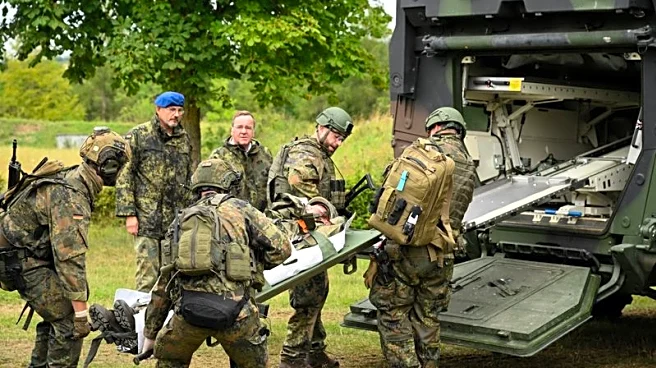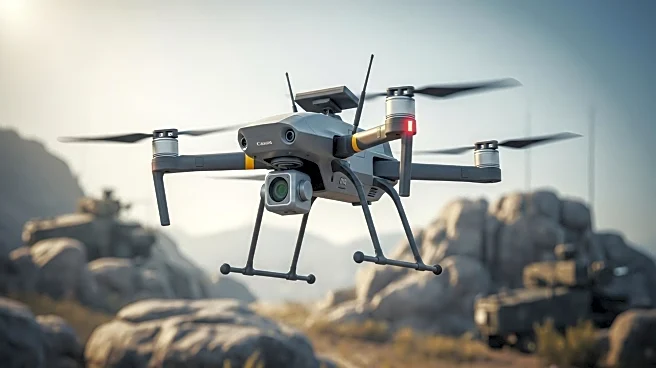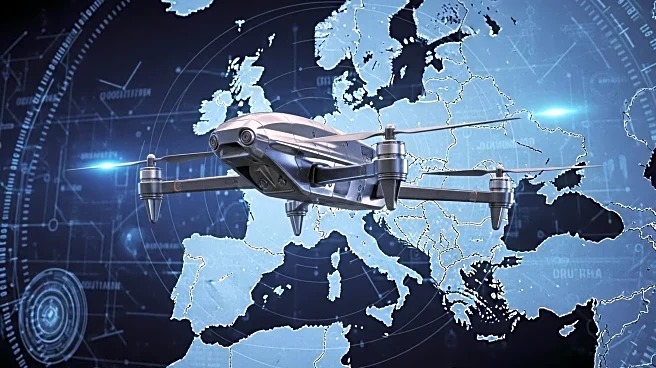What's Happening?
Milrem, an Estonian defense company, plans to deliver over 100 THeMIS unmanned ground vehicles (UGVs) to Ukraine by the end of 2025. These UGVs will join 15 units already deployed in Ukraine, funded by Germany. The THeMIS vehicles are primarily used for support roles, such as ammunition supply and engineering tasks. Ukrainian defense technology company Frontline has integrated a Buria remote weapon station with a 40 mm automatic grenade launcher onto the THeMIS UGVs. Milrem's director of industrial partnerships, Colonel Paul Clayton, noted that Russia has placed a bounty on capturing these vehicles.
Why It's Important?
The deployment of THeMIS UGVs in Ukraine represents a significant advancement in unmanned military technology, enhancing the Ukrainian army's operational capabilities. These vehicles can perform various support roles, reducing the risk to human personnel and increasing efficiency in logistics and engineering tasks. The integration of advanced weaponry onto the UGVs further strengthens Ukraine's defense capabilities. This development may influence military strategies and the use of unmanned systems in conflict zones globally.
What's Next?
Milrem's delivery of additional THeMIS UGVs is expected to bolster Ukraine's defense efforts against Russian aggression. The integration of new technologies and weaponry onto these vehicles may lead to further innovations in unmanned military systems. Other countries may observe Ukraine's use of UGVs and consider similar deployments to enhance their own military capabilities.
Beyond the Headlines
The use of unmanned ground vehicles in military operations raises ethical and legal questions regarding warfare and the role of autonomous systems. As technology advances, there may be discussions about the rules of engagement and the accountability of unmanned systems in conflict situations. The deployment of UGVs also highlights the growing importance of technological innovation in modern warfare.












